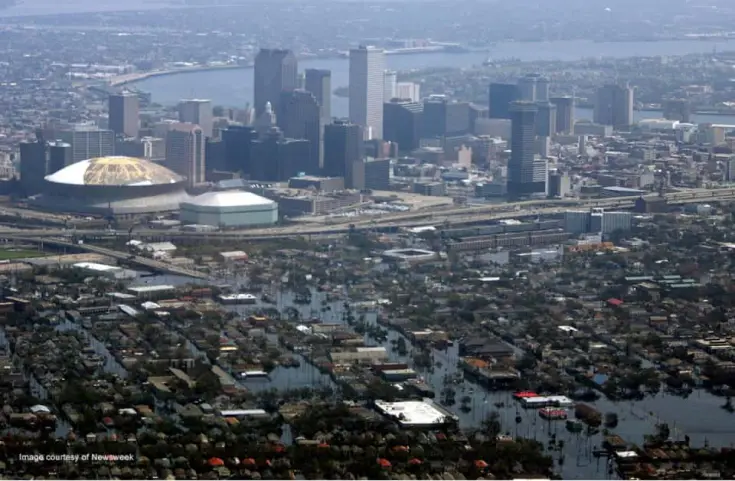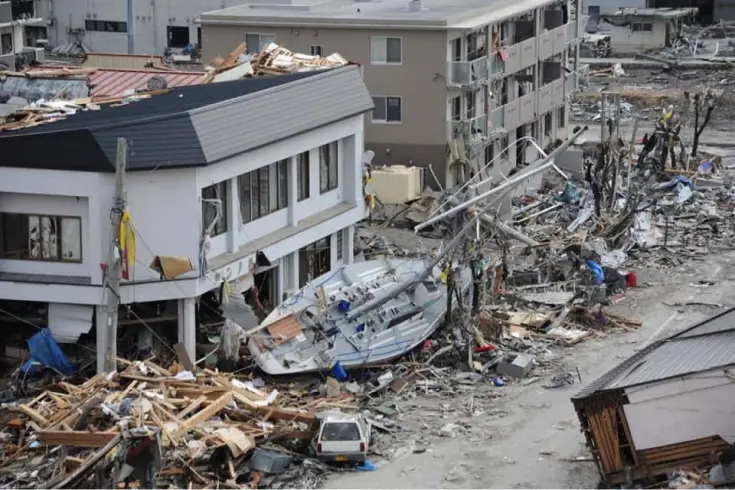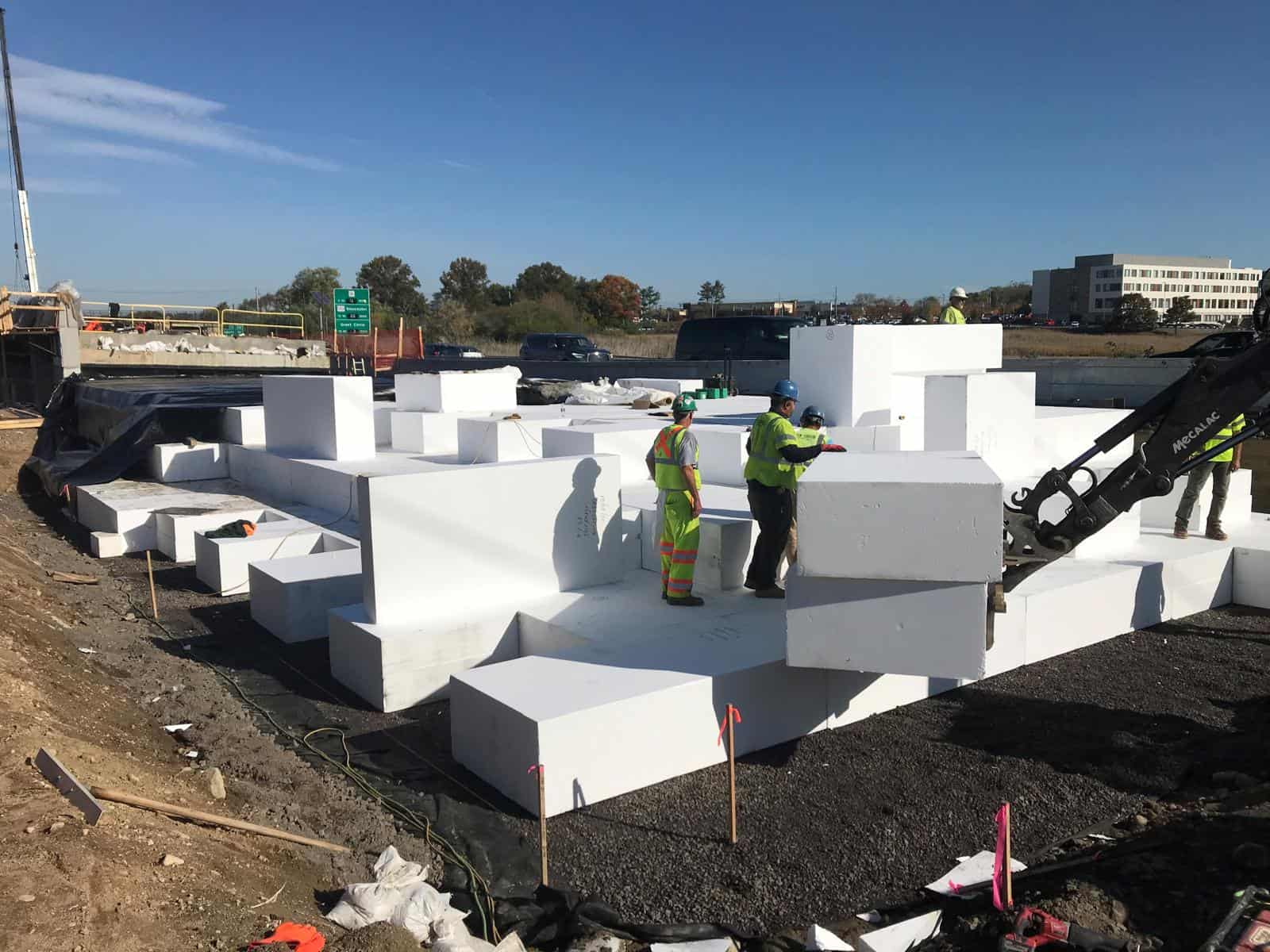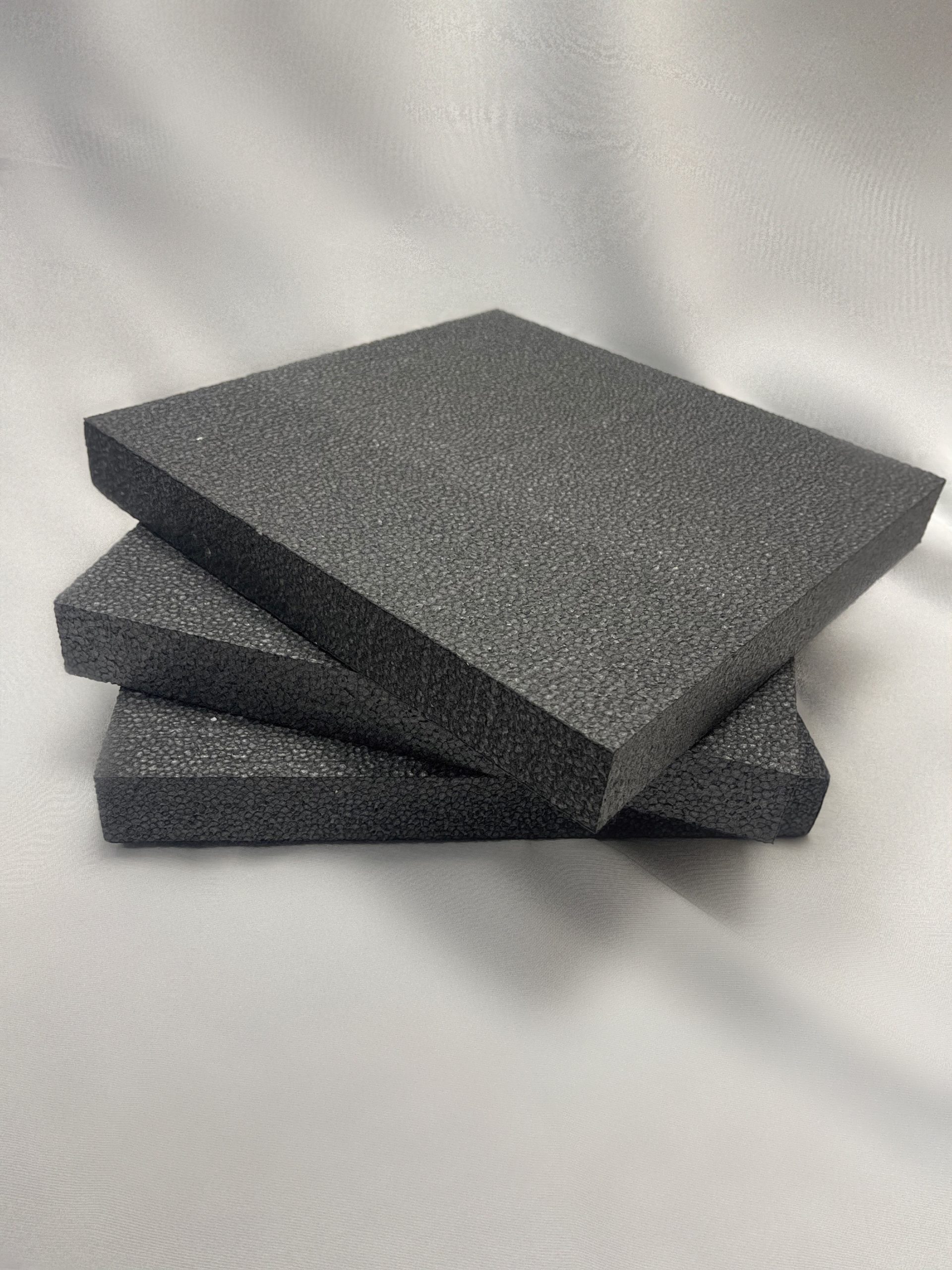Geofoam, with a little help from elasticized geosynthetic panels could protect levees, sidewalls, against hurricanes, earthquakes and tsunamis, as well as other natural disasters. These are increasing in number, small and large worldwide and seem to be part of life. Geofoam and other geosynthetics can’t supply the complete solution to saving lives, preventing disaster or the destruction of property, but it can help.
Coastal areas, underground pipelines, nuclear power plants, refineries, fault-line areas and anywhere a natural disaster can occur is where Geofoam can be utilized. Geotechnical engineering study has been happening since man tried to move outside of the cave and create lasting domestic structures. We’ve come a long way from that point, and much has been learned. However, study continues and one day systems will be defined that help to minimize the damage and loss of life natural disasters generate.
One day we’ll have structures that are impermeable and impervious to the forces of nature. Until that day arrives, we must learn all we can, become better prepared for the inevitable, and focus on safety as a global concern.
New Orleans
As you have learned over the past several months, Geofoam is a tremendous product to be used and provides strength and durability when utilized properly in retaining wall, levee, roadbed and other commercial construction projects.Hurricane Katrina’s extensive damage and loss of life could have been lessened had their levee system been brought up to date.Unfortunately, the outdated and ineffective levee system in New Orleans has been discussed, analyzed, dissected, cursed at, litigated and decried since they were first built in the founding of the settlement in 1718, as depicted from the following statement:
“The settlement was also prone to periodic flooding by the Mississippi River (between April and August), and flooding and wind damage from hurricanes between June and October. Added to this was abysmally poor drainage, created by unfavorable topography, lying just a few feet above sea level on the deltaic plain of the Mississippi River, which is settling at a rate of between 2 and 10 feet (ft) per century. The tendency for flooding during late spring and summer runoff came to characterize the settlement. The natural swamps north of the original city were referred to as “back swamps” in the oldest maps, and “cypress swamps” on maps made after 1816. During the steamboat era (post 1810), New Orleans emerged as the major trans-shipment center for riverborne to sea-born commerce, vice-versa, and as a major port of immigration.”
Flooding of the New Orleans Area by Hurricanes strike the Louisiana Coast with a mean frequency of two every three years (Kolb and Saucier, 1982). Since 1759, 172 hurricanes have struck southern Louisiana (Shallat, 2000). Of these, 38 have caused flooding in New Orleans, usually via Lake Pontchartrain. Some of the more notable events have included: 1812, 1831, 1860, 1893, 1915, 1940, 1947, 1965, 1969, and 2005.

Woulda’, Coulda’, Shoulda’
We know from history that the drainage canal systems, the pumping stations failures and the shifting soils of the outdated levee system all failed, creating the costliest natural disaster in US history.
The 700+-page report was funded with $230,000 from the National Science Foundation, another $50,000 from UC Berkeley’s Center for Technology Research in the Interest of Society (CITRIS), and the donated time of 36 professional engineers and scientists from around the nation. The team studied every stretch of the levee system, either on the ground or from the air, conducted soil tests and ran computer simulations.
Its results differ from those of many previous reports, in particular that of the Corps’ own Interagency Performance Evaluation Taskforce (IPET). According to Seed [head of investigation at UC Berkley], the Corps always has maintained that the levees breached because they were overtopped by an unexpectedly high storm surge.
“These levees were not overtopped, they failed, primarily as a result of human error,” Seed said. ” The hurricane wasn’t much bigger than the levees were designed for.”
“One of our major findings is that the levee system protecting New Orleans was defective as a result of dysfunctional organizations,” emphasized report coauthor Bob Bea, UC Berkeley professor of civil and environmental engineering. “The Corps needs to be modernized, and federal and state oversight of flood control restructured, because they can’t build a safe levee with current processes.”
Had a system of compressible inclusion been utilized, the pumping stations would have remained operational (these pumping stations were positioned between sea-level and below) because they operated on their own power. It’s a system utilizing an elasticized geosynthetic panel and Geofoam composition, used against a rigid earth retaining like a levee. Compressible inclusion is the use of product that is compressible at least on one side. It is utilized against a rigid wall construction in most cases. However, it is not as well-known solution as is traditional load-bearing walls are constructed.
By using such a method, the drainage component (included in the construction of such a method) would have enabled a controlled flow of water, as the levee would have held. Within the system is a gas and water membrane covering a compressible Geofoam structure. Rather than the loss of life, displacement of tens of thousands of people, and more than $1.25 Billion in property, had the Army Corps of Engineers mandated modern levee construction and flood control, history would have been more kind.
This excerpt should lend credence to the belief that more could have been done.

The analysis or design of any geotechnical structure (retaining wall, unsupported slope, foundation) is fundamentally based on the need to prevent “failure” (the Limit State) in the broadest sense of the word (i.e. loss of function) by satisfying one equation:
Resistance (Capacity)> Loads (Demand)
The extent to which resistance of a structure exceeds the loads applied to it is “safety” and this can be incorporated to the required or desired level using the traditional Allowable Stress Design (ASD)/Working Stress Design (WSD) approach of the more modern Load-and Resistance Factor (LRFD)/Ultimate Strength Design (USD) approach.
Historically, civil engineers have been educated to satisfy Eq.1 in the majority of cases by increasing the left-hand or “resistance” side of the equation. The loads, generally dictated by nature either directly or indirectly, are generally accepted as is and structural material is added to the structure so that Eq.1 is satisfied from both a stiffness (Serviceability Limit State, SLS) and strength (Ultimate Limit State, ULS) perspective.
While this traditional approach has and continues to serve the profession well, it is important to note that it is not the only way to satisfy Eq.1. Specifically, the right-hand or “load” side of the equation can be reduced. Alternatively, there can also be some combination of load reduction and resistance increase. Regardless of the specifics, it is worth noting that the concept of load reduction works particularly well for geotechnical structures because of the many problem categories, especially those involving earth-retaining structures and unsupported slopes, a significant portion of the design loads comes from the mass of the soil itself under gravity or seismic acceleration. Therefore, a potential alternative earth-retaining structure development is to develop technologies where loads are reduced as part of an overall strategy to satisfy Eq.1.
In other words, there is more than one way to save a city. I am not pretending that one of the alternative designs listed containing the papers’ excerpt would have prevented the levee collapse, causing the pumping stations to fail and ultimately washing away a great part of New Orleans.
I am saying that most believe the levee system at the time was sorely outdated. As the University of Berkley Ca determined, the major error was “human.” Designed and built by the Corps, funded by not only federal but state and local public entities, and managed by the Levee Board, it’s no wonder they never got the proper attention and singular importance. Inadequate engineering and lack of proper funding and the lack of cooperation, in the end, the crux of the failure.
While I do not infer that any such a system could have saved the Sendai, Japan, or Maule, Chile, or any of the other tsunamis of the past decade or so, some of the devastation could have been spared. By implementing structural reinforcement via Geofoam and/or geosynthetics to provide controlled yielding (compressible inclusion), there may have been less lives lost and fewer of the tens of thousands of buildings destroyed.
2011 Tohoku Earthquake and Tsunami
Japan’s devastation resulted from a tsunami, which was the product of an earthquake, whose epicenter was less than 70 km (43.5miles) east of the Oshika Peninsula of Tohoku. What has also been called The Great East Japan Earthquake, was a 9.0 registered quake, emanating from a depth of 32 km (19.88 miles). That’s a long way underwater, and that’s where the resulting force originated, amassed and created a wall of water heading toward landfall wherever it went. The highest measurement of the oncoming wave it created was estimated at 30 m (98.4 feet). The devastation that resulted caused a loss of life of approximately 20,000 people, tens of thousands of buildings destroyed, and widespread panic across the entire Pacific Rim.
In a study by the Carnegie Endowment, it too found the failure at the Fukushima Daiichi Nuclear Power Station was indeed preventable. Much more than an Act of God, the tsunami that caused the failure of the nuclear plant to expel “large quantities” of radioactivity into the atmosphere were the result of human error. While it is true the tsunami was a result of the 9.0 Richter scale earthquake, human error and the lack of cooperation between the owners and the government were the impetus for the failure. When will we learn?
This is not to say that Geofoam could have saved the power station, but proper design and upgrade to withstand massive load containment and controlled deformation would have utilized both Geofoam and geosynthetic materials to provide the stability of the foundational soils, and increasing the stability of the levee, as it should have been constructed in the first place.
In his 2012 book, Designing with Geosynthetics – 6th Edition, Volume 1, Robert Koemer goes into great detail how the role of geosynthetics including Geofoam can minimize sub-soil failure rates and maximize stability (even from earthquakes).
Of course, hindsight is 20-20. This book addresses all of the sub-soil conditions that can be avoided/minimized by way of the use of Geofoam and other geosynthetics from construction silt fence s to geomembranes and geogrid.
From the Journal of Construction Engineering and Management, Volume 134, Issue 8 (August 2008):
“A detailed integrated excavation plan must be developed that provides excavation and backfill for the entire site and the power island. This excavation plan needs to be developed, finalized and incorporated into the Site Development Project Schedule. The plan should include requirements for equipment methods, soil stabilization, dewatering, rock removal and backfill. It should detail the required construction equipment personnel power and materials. It should also include the source of backfill materials as well as the location for the economic disposal of spoil materials. Excavation needs to be modeled and planned. For example, a soft-soil site may require excavators and conveyors for excavation and backfill, instead of tracked and wheeled earth-moving equipment.
Note the boldfaced verbiage indicates that in every commercial construction project including nuclear power plants have a need for geosynthetics and Geofoam. Geofoam and geosynthetics are fast becoming a necessary part of commercial construction of any shape and size. Geofoam has already become a welcome alternative to traditional insulation, foundation formation and general residential home design, so why not utilize the stability-improving product for other construction uses? Our future may depend on it.
We as a global society must come to the awakening of the threats of nature, as climate change, man’s continual abuse of the planet, and the fragility of our environment. Through the use of geosynthetics, including Geofoam, we stand a slightly better chance of beating the odds one day.
Next time I’ll continue the story of how Geofoam can be a critical part of pipeline vulnerability to earthquakes and shifting soils as a result of natural disasters.







